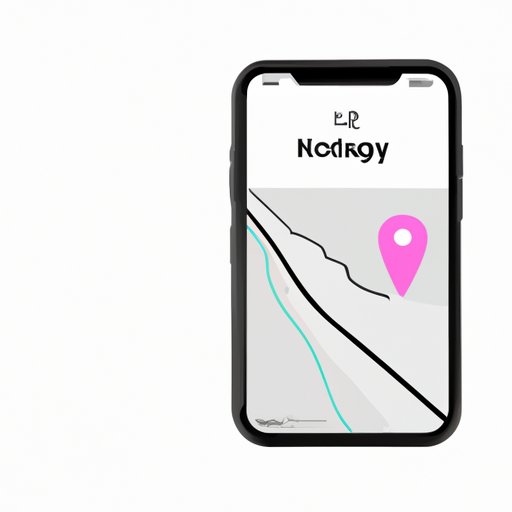
I. Introduction
As mobile technology continues to evolve, learning how to manage your privacy and security has become increasingly important. Understanding your iPhone location history is one crucial component of this management. This article will provide a comprehensive guide to checking, understanding, and deleting your iPhone location history, as well as offer tips for maximizing your privacy and optimizing your daily life using location tracking data.
II. Step-by-Step Guide to Checking Your iPhone Location History
Accessing and reviewing your iPhone location history is a simple process. Begin by opening the “Settings” app on your iPhone and selecting “Privacy.” From there, select “Location Services” and scroll down to the “System Services” menu. Scroll down again to find “Significant Locations” and select it. Here, you will see a list of locations your iPhone has tracked.
You can click on a particular location to view more information about how long you spent there and when you last visited. You can also use the slider bar to adjust how much location history data your phone collects.
It’s important to note that you must have “Location Services” enabled for location tracking to work in the first place. You can turn this on in the “Privacy” section of your “Settings” app.
III. Why Checking Your iPhone Location History is Important and How to Do It
Regularly reviewing your iPhone location history can be essential to ensure your personal safety and security. For example, if your phone shows that you’ve been in an unfamiliar area for a prolonged period, you can investigate whether someone has been using your phone without permission or if it was stolen. Additionally, monitoring your location history can be a valuable tool for checking whether your children or family members are safe, as well as understanding your own daily routines and patterns.
It’s important to stay aware of location tracking settings on your iPhone, as well. While tracking can be a useful feature, it can also be invasive. Make sure you are only allowing apps that you trust to use your location data, and be wary of any apps that collect this data in the background.
IV. Maximizing Your Privacy: How to Find and Delete iPhone Location History
If you’re concerned about privacy, you may want to delete your iPhone location history regularly. To do this, return to the “Significant Locations” menu under the “Location Services” section of your “Settings” app. You can then manually delete individual entries by clicking “Edit” and using the “-” icon next to each entry, or you can choose to delete all history by clicking “Clear History” at the bottom of the screen.
It’s important to note that by deleting your location history, you may be limiting the functionality of certain apps. For example, deleting your search history will make it harder for Siri to make relevant suggestions based on your past search queries. However, if you’re looking to optimize your privacy, deleting your location history regularly can give you peace of mind that your data is not being misused in any way.
V. How to Access and Understand Your iPhone’s Location Data
While your iPhone’s location history can tell you a lot about where you’ve been and when, sometimes it’s helpful to have a more comprehensive understanding of your location data. To access this, you can use tools like Apple Maps or Google Maps. On Apple Maps, you can click the “i” icon in the top right corner to view your “Frequent Locations” and “Favorites.” To view all of your location history data, click “Home” and select “Settings” and then “Maps.”
Understanding your location data can reveal helpful insights about your daily routines and patterns, such as when you leave for work in the morning or how frequently you visit different stores or restaurants. This can be helpful for optimizing your routes and making better time management decisions.
VI. Tips and Tricks for Tracking Your iPhone Location History Like a Pro
If you want to make the most out of location tracking on your iPhone, consider turning on Find My with Family Sharing, which allows you to see the real-time location of family members who have agreed to share their location with you. Additionally, you can use location tracking to optimize your daily life. For example, you can use apps like Google Maps to alert you when traffic is bad on your usual route to work, allowing you to adjust your commute time accordingly. You can also monitor the location data of elderly family members to ensure their safety and well-being, or keep tabs on the location of a lost or stolen phone.
Finally, be sure to audit your app settings to ensure that apps that don’t require location data aren’t collecting it. Doing so can help limit the amount of information you give away while still being able to enjoy the benefits of location tracking.
VII. Conclusion
Regularly monitoring and managing your iPhone location history can be a crucial component of maintaining your privacy and personal safety. By following the steps outlined in this article, you can easily review, understand, and delete your iPhone location history as well as optimize your location tracking settings for maximum utility. Keeping tabs on your location data can help you unlock new insights into your routines, make better time management decisions, and ensure the safety of you and your loved ones.




